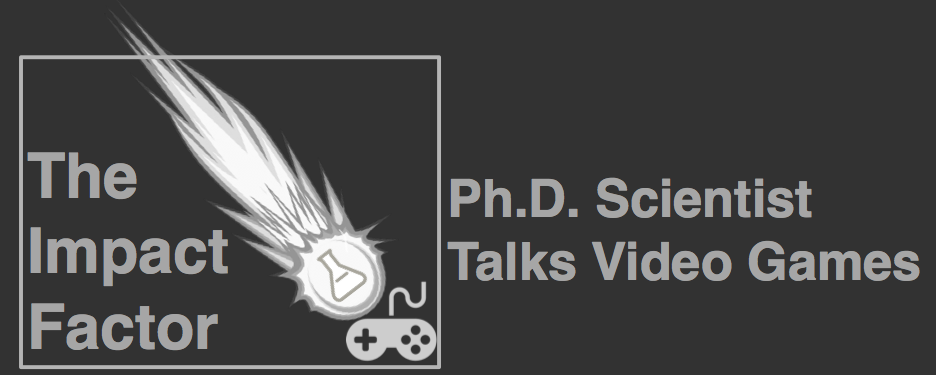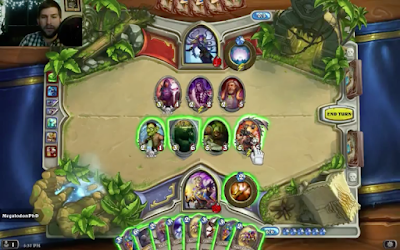Bringing The Party: Local Multiplayer For Your
Holidays
Perspectives
The holidays are here! Hopefully you find yourself among family and friends. As much as you love those
people, slow moments happen. At least in my experience, when the going gets
slow the slow get gaming. Wait, maybe that didn’t come out right.
Growing up in the 90’s I
never felt in dire need for great local multiplayer games. Whether they were on
Super Nintendo, PlayStation or N64, all you needed was a couple controllers and
you were bound to have at least a game or two that worked well in a party
setting. Split-screen, shared-screen, whatever. Every household had their own
suite of go-to party games. In mine, it was Mario
Party, Crash Team Racing, Soul Calibur, Kirby’s Air Ride and Super Smash
Bros. And oh what fun those games could be.
As I’ve written about here
before on The Impact Factor, local multiplayer games are becoming less and less
a part of modern gaming. So much so that my fiancée and I have had to look for
other options for couch co-operative games. And we’ve found some good options to
get in our co-op gaming fix. But what about party games? Sadly, those too
are released in fewer numbers these days. Nintendo still champions the idea of
local gaming, but their struggles with the Wii U has made it not the most
compelling purchase. So what do people with the other consoles (like PS4) have as party game options? I’m here to tell you, there’s surprisingly
quite a few. All thanks to indie developers.
I’ve chosen five great local
multiplayer games that will work well at any holiday party. So don’t let
boredom win! Don’t default to just going to see Star Wars again or wander aimlessly around a mall. The Impact
Factor is here to say that you have options! These five games run the gamut of
experiences: from geometric zone control, to goofy pole-riding completion, to
trivia, to soccer with cars, everything you could want is here. So grab your
family & friends, a controller, your smartphone (!?!), and be prepared to
have a blast.
Towerfall Ascension
Enjoy Super Smash Bros? Like manic 2D pixel-art fun? Towerfall Ascension is there for you. Like all the games I’ll write about today, Towerfall Ascension
is a perfect game for anyone of any skill level to pick up and play. And have
fun. The premise is simple. You play as an archer. You try to hit your
opponents with your arrows. Jumping around the 2D area is intuitive and easy.
Aiming and firing your bow just as simple. There’s a wonderful depth to the
game, too, in managing your quiver (you have a set amount of arrows you can
fire before you need to go collect them again) or in playing with screen
wrapping (falling down the bottom takes you to the top of the map). Generally
though, Towerfall Ascension is just a
zany, chaotic flash. It takes the idea of something like Super Smash Bros. and makes it even easier to digest. Towerfall Ascension is great.
Nidhogg
Though 2-player only, your
whole party will be entertained by this one. Each of the two players plays as a
fencer. The objective is to move past your opponent to get to the far side of
the map. To get past them you’ll generally have to clash, however, and that’s where
the party goofiness and fun comes in. The sword fighting is so simple: one
button attacks with your sword, and using up / down allows you to attack at
different levels. This makes each encounter a cheerful dance. Where will my
opponent attack? Should I prepare to block a sword throw? Or should I try to
roll towards their feet to sweep kick them? The back and forth in this game is
probably the best of any game on this list. You’ll be cheering and screaming
before too long as your tiny pixel swordsman lives, dies & repeats. And
then gets swallowed by a gigantic mythical worm. Yep.
Rocket League
If you’ve been following The
Impact Factor over the course of 2015, you shouldn’t be surprised at all to see
this one here. Rocket League is just
fantastic. Again, it’s dead simple. It’s soccer but instead of people you play as a car. But this simplicity is the best kind of simplicity and a
cornerstone of great game design: easy to learn & difficult to master.
Getting perfect control of your car, especially when it comes to huge aerial
hits or jumping off walls, can take some time. The good thing is that Rocket League is fun at all levels of
play. Zooming around the gorgeous stadiums is fun. It’s satisfying in a
backyard party kind of way bouncing around the gigantic soccer ball.
The forceful explosion when you score is spine-tinglelingly satisfying. Rocket League is pure joy, stuffed into
one compact and awesome package.
Sportsfriends
You’re not going to get much
better value out of a party game than Sportsfriends. This package contains 4 (5 if you include a secret
mini-game) games that are wholly different from one another and all exceptional
party games. They’re goofy, easy to play, easy to understand, perfect for
pick-up & play, create crazy party game moments, and so on. Super Pole
Riders has you pole vaulting to kick a ball, and other players, as you try to
score a goal. Barabariball is a charming fusion of Super Smash Bros. and rugby. Hokra is a hockey-esq zone control
game. And J.S. Joust is a crazy hybrid of physical and digital that has to be
played to be understood. Sportsfriends has a
perfect presentation and more than enough party silliness to keep you and your
group occupied.
The Jackbox Party Pack
Jackbox is my final, and strongest, party game recommendation. Holy moly
is this fantastic. I’ve always been a fan of the Jack games. I spent a lot of childhood hours playing the classic You Don’t Know
Jack on the family computer. But The
Jackbox Party Pack is so much more. It comes packed with a ton of great
party games: YDKJ, Fibbage and Drawful in particular are great. Why is Jackbox my highest recommendation? Jackbox is a game anyone (yes anyone) can play. As great as the other four titles on this list
are, they all require using a game controller. For some, being asked to use as
PS4 controller can create a lot of anxiety. It’s a complicated little thing
that’s wholly unfamiliar to someone who doesn’t game. For Jackbox though, your controller is your smartphone. Each game
creates a room that can be joined via the Jackbox
website. Interfacing with the game is just typing, drawing or touching. It
removes essentially all barriers to playing a party video game. And then on top
of all that, of course, Jackbox is
hilarious. It creates perfect party moments where you can laugh with, or at,
your guests. All games included are clever and fun. I had heard Jackbox was good, but didn’t expect it
to be as great as it was. It will be a party staple for years to come.



















